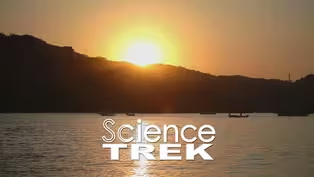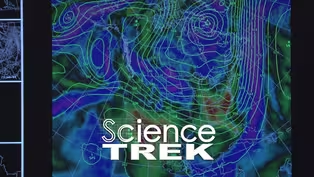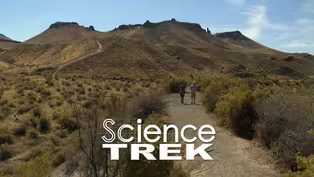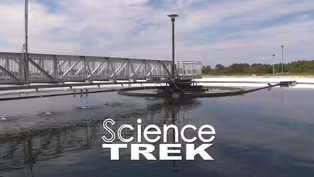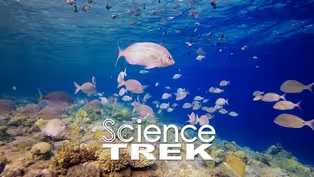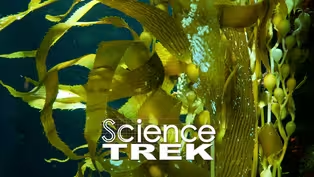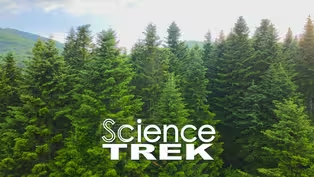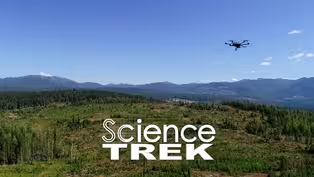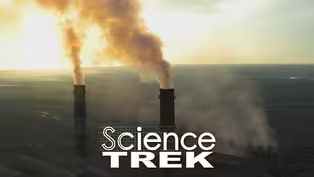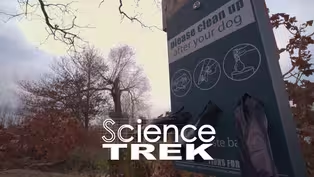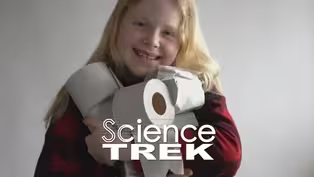
Sewage: Sewage Through the Ages
Special | 5m 59sVideo has Closed Captions
What shouldn’t you put down the drain or flush away?
Humans have found different ways to deal with sewage through time. Romans had sewers. In the Dark Ages, we tossed human waste into pits or even the street. Find out when we started treating sewage and why. And find out what you should not put down your drains.
Problems playing video? | Closed Captioning Feedback
Problems playing video? | Closed Captioning Feedback
Science Trek is a local public television program presented by IdahoPTV
Major Funding by the Laura Moore Cunningham Foundation and the Idaho National Laboratory. Additional Funding by Sparklight, the Friends of Idaho Public Television and the Corporation for Public Broadcasting.

Sewage: Sewage Through the Ages
Special | 5m 59sVideo has Closed Captions
Humans have found different ways to deal with sewage through time. Romans had sewers. In the Dark Ages, we tossed human waste into pits or even the street. Find out when we started treating sewage and why. And find out what you should not put down your drains.
Problems playing video? | Closed Captioning Feedback
How to Watch Science Trek
Science Trek is available to stream on pbs.org and the free PBS App, available on iPhone, Apple TV, Android TV, Android smartphones, Amazon Fire TV, Amazon Fire Tablet, Roku, Samsung Smart TV, and Vizio.
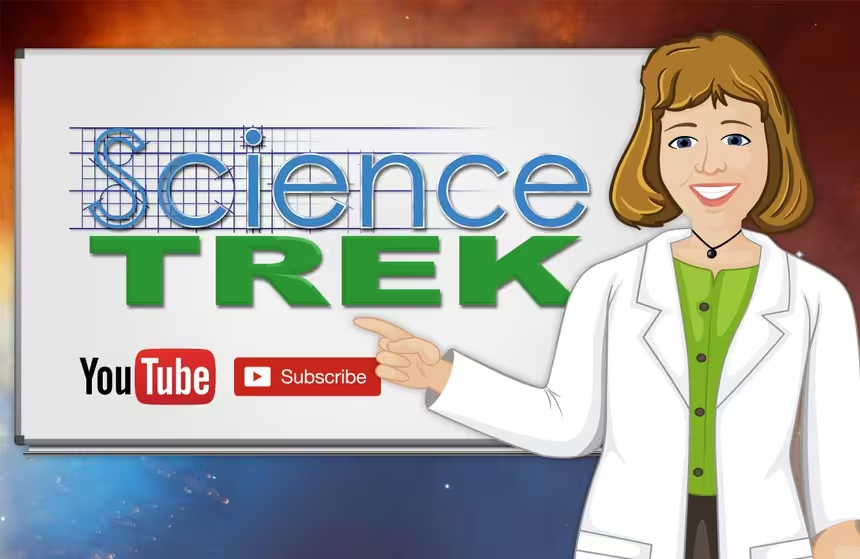
Science Trek
Science Trek is a place where parents, kids, and educators can watch short, educational videos on a variety of science topics. Every Monday Science Trek releases a new video that introduces children to math, science, technology, engineering, and math (STEM) career potentials in a fun, informative way.More from This Collection
The environment is where we live. It is where all the animals, insects, plants and other living things make their place in the world. It is everything that makes up our surroundings including the air we breathe, the water we drink and the land we live upon. Scientists study many different parts of the environment to learn how these systems work. Learn more about the environment.
Weather: Meteorologists At Work
Video has Closed Captions
How do meteorologists forecast the weather? (5m 13s)
Deserts: Cacti, Bees and the Sonoran Desert
Video has Closed Captions
How do Saguaro Cacti survive in the desert? (6m 23s)
Oceans: What's Under the Surface?
Video has Closed Captions
Oceans cover 70% of the Earth’s surface. Find out more about what’s under the surface. (7m 4s)
Oceans: Saving Kelp with AI and ROV
Video has Closed Captions
How do you use AI, ROV and an x-box joystick to save kelp? (6m 50s)
Video has Closed Captions
Forests provide us oxygen to breathe and much more. Find out about Forests. (5m 5s)
Forests: Flying Drones for the Trees
Video has Closed Captions
Learn about the latest technology used to manage forest land. (6m 49s)
Climate: Climate Change and Greenhouse Gases
Video has Closed Captions
Meet a climate scientist and join her on a mission. (6m 11s)
Providing Support for PBS.org
Learn Moreabout PBS online sponsorshipJoan Cartan-Hansen, Host: We're pretty lucky to have access to proper sewage or waste water treatment systems.
We haven't always had that and many people in the world still don't.
Find out more about the flow of sewage treatment through time and maybe your back yard.
[MUSIC] Student: What's going on?
Mom: Toilet's clogged.
Student: So, what I am supposed to do?
Cartan-Hansen: That's a problem humans have faced for a long time.
When there were just a few people, pooping outside wasn't a problem.
But by 3000 B.C., the Indus people had it with the stink and developed the first sanitation system.
They poured water down indoor drains to push the waste into pipes that ran into a river or into a pit dug in the ground.
There were waste systems in ancient Greece and the Romans had complex underground sewage pipes to carry waste away.
But by the middle ages, humans were back to tossing sewage into pits or even into open ditches along the street.
It smelled and spread disease.
By the way, it wasn't until the mid-1800's, that scientists proved a link between untreated sewage and illnesses like typhoid and cholera.
By 1855, the first sewage systems were built in New York and Chicago.
At first, the sewage from those systems were dumped untreated into rivers.
But by 1914, engineers Edward Arden and William Locket discovered active sludge.
a biological waste water treatment system still being used today.
Student: But what if you aren't in a city with a sewage system?
Cartan-Hansen: Approximate 20 percent of Americans use a septic tank for their waste disposal.
Waste water from sinks, baths, showers and toilets flow out of the house into a giant tank buried in the ground.
Bacteria inside the tank starts breaking down the organic matter.
The septic tank acts like a settling pond.
The heavy solids sink to the bottom.
The fats, greases and oils, called scum, floats to the top.
Filtered water flows out of the tank into pipes into a drain field.
Most septic tanks are emptied every three to five years.
Student: How do they make sure the water is safe?
Cartan-Hansen: Scientists like Anne test water to assure its purity.
Anne Epperson: People go to the bathroom, the water's collected goes in the sewers and it comes to this facility.
And we take that sample, before it comes into the plant, and we can take it and see if there's viruses or bacteria that are harmful.
Cartan-Hansen: This lab tests all sorts of different samples from lots of locations, even checking the water in the city's swimming ponds.
Epperson: If there's bacteria and if it's too high and, you know, we can tell the parks and recreation if the water is safe to swim in.
And if it isn't, and we closed it down and we take care of the problem.
Cartan-Hansen: The scientists here can even track levels of disease like SARS-COV-2, the virus that causes COVID-19.
Epperson: When you used to go to the bathroom in the fecal material, you actually, um, slough off some of the COVID if you have it.
People that, that have it and have symptoms and people that don't have it, it'll be seen in the wastewater.
And so we can actually track through a community earlier and find out how much is actually happening.
Cartan-Hansen: The tests can't identify who has the disease, but it can tell health officials if the level of the virus is increasing in the community and that allows them to take precautions to protect the population.
Student: What about parts of the world without sewage treatment.
What do they do?
Cartan-Hansen: Some use pit toilets or holes in the ground.
Some have septic tanks, but those tanks don't always work.
Basically, 67 percent of the world has no proper sewage treatment.
And in developing countries, 80 to 90 percent of waste water goes directly into streams and rivers.
And that can spread disease and damage the environment.
Student: So what can I do?
Cartan-Hansen: There're simple things you can do to keep your own sewage treatment working.
Don't put anything down the toilet except the four P's: poop, pee, puke and toilet paper.
Don't put grease down your sink.
Don't put any medications down the drain or in the toilet.
In many places, don't let anything but rain water go down storm drains.
That water usually isn't usually treated before it goes in the local stream or river.
And you can support efforts worldwide to help communities get clean water and sewage treatment.
We all live on one planet with a limited amount of water.
So let's keep it clean.
Student: Wow.
I never thought about sewage treatment.
That's really important.
But I still need to go to the bathroom so what I am supposed to do?
Student: Are you kidding me?
I think it's time for me to improve our sewage system.
I'm going in.. Cartan-Hansen: If you want to learn more about sewage, check out the Science Trek website.
You'll find it at science trek dot org.
[MUSIC] n of Science Trek on Idaho Public Television is made possible through the generous support of the Laura Moore Cunningham Foundation, committed to fulfilling the Moore and Bettis family legacy of building the great state of Idaho.
By the Idaho National Laboratory, mentoring talent and finding solutions for energy and security challenges, by The Friends of Idaho Public Television and by the Corporation for Public Broadcasting.
Video has Closed Captions
Clip: Special | 1m 4s | Pet poop is a problem. Here’s how to solve it. (1m 4s)
Sewage: Toilet Paper Saves the Day
Video has Closed Captions
Clip: Special | 1m 4s | How is toilet paper made? (1m 4s)
Providing Support for PBS.org
Learn Moreabout PBS online sponsorship
- Science and Nature

Explore scientific discoveries on television's most acclaimed science documentary series.

- Science and Nature

Capturing the splendor of the natural world, from the African plains to the Antarctic ice.












Support for PBS provided by:
Science Trek is a local public television program presented by IdahoPTV
Major Funding by the Laura Moore Cunningham Foundation and the Idaho National Laboratory. Additional Funding by Sparklight, the Friends of Idaho Public Television and the Corporation for Public Broadcasting.
